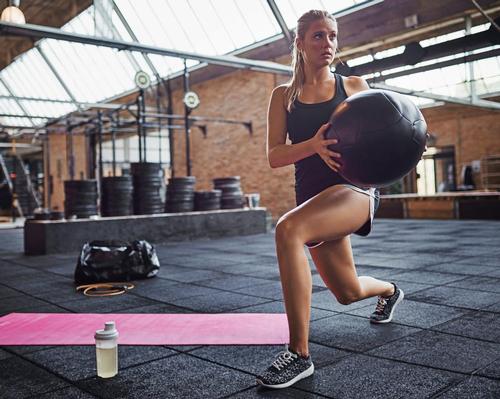25 Jun 2020
Groundbreaking research indicates gyms pose no additional risk of catching COVID-19
BY Tom Walker

A large-scale academic study has concluded that there is "no threat of increased COVID-19 spread" at fitness facilities, even when intensive training takes place.
A team of researchers at the University of Oslo, led by professor Michael Bretthauer, investigated SARS-CoV-2 transmission (the virus responsible for COVID-19) – and whether it was attributable to gyms.
"Our trial showed no virus transmission or increase in COVID-19 disease that was related to the opening of gym facilities," said Bretthauer.
The research – the first of its kind in Europe – studied 3,764 members of the public, aged between 18 and 64 years, who had no COVID-19 relevant comorbidities.
Roughly half (1,896) of the people were given access to visit the gyms, while the other half (1,868) – a control group – were not.
The former were given access to five gyms – SATS Sjølyst and CC Vest (two health clubs owned by Nordic fitness giant SATS), STOLT Stovner and Rommen (both operated by gym chain STOLT Trening), and EVO Bryn (a gym owned and operated by EVO Fitness Group).
Facilities were opened from 22 May 2020 specifically for the study – while Norway was still in lockdown – and activities available at the gyms included services the clubs would normally provide, from gym floors to group classes (including spinning and yoga).
Those visiting a gym had to adhere to the virus prevention guidelines drawn up by the Norwegian Institute of Public Health.
These included social distancing (one meter for floor exercise, two meters for high-intensity classes) as well as enhanced hand and surface hygiene, while all workout stations were supplied with disinfectants in order for them to be cleaned after each use by the member.
Gym staff also controlled access to the gyms, to ensure distance measures and avoid overcrowding. Locker rooms were open, but showers and saunas were closed.
The research team then tested each person for SARS-CoV-2 by self-administered naso-, oropharyngeal and sputum sampling after two weeks – and clinical disease by linkage to electronic patient records after three weeks.
In the group that trained at a gym, 81.8 per cent trained at least once and 38.5 per cent visited a gym six times or more, with the remainder ranging between these two measures.
Out of 3,016 individuals who returned the SARS-CoV-2 PCR tests, there was one positive test, but while the positive individual was part of the "gym group", they had not visited the gym before the positive test and contact tracing found that they had actually been infected in their workplace.
During the three-week study, there were no outpatient visits or hospital admissions due to COVID-19 in either group.
In addition, out of 91 employees who worked at the training facilities during the trial period and agreed to provide data, 83 (91.2 per cent) were tested for SARS-CoV-2 and none were positive.
In its conclusion, the researches stated: "Our trial showed no virus transmission or increase in COVID-19 disease related to the opening of gym facilities, providing good hygiene and social distancing routines were in place.
"By emergency law, all training facilities were closed in Norway during the pandemic. The closure was reasoned by the assumption that training activity at the facilities would increase the risk of virus transmission between members of the facilities and thus COVID-19 disease among members, staff and the community.
"However, basic hand hygiene and social distancing measures – by securing 1 to 2 meters distance between individuals – are well-proven and important virus transmission protection measures. They are inexpensive, easy to apply, and do not require large resources.
"During the COVID-19 pandemic, countries introduced closures of important societal activities because it was assumed that the simple measures would not be enough to contain virus transmission.
"However, if virus containment, including contact tracing and quarantine, hand hygiene and personal social distancing measures are sufficient to prevent virus spread, closures could be avoided and thus harms reduced.
"Our trial sought to test if the closure of gyms is needed, or if open facilities can provide enough hygiene and social distancing to prevent virus spread.
"If hygiene and distancing measures could be achieved, we assumed it would be safe to open gyms and training facilities.
"As our results show, there was no increase in COVID-related disease due to the opening of gyms and training facilities."
• To download and read the full study, which is awaiting peer review, titled Randomized Re-Opening of Training Facilities during the COVID-19 pandemic – click here.
MedRxiv, which has published the paper as a preliminary report, recommends as a matter of protocol that no clinical decisions are based on research until after it has been peer-reviewed.
Close Window